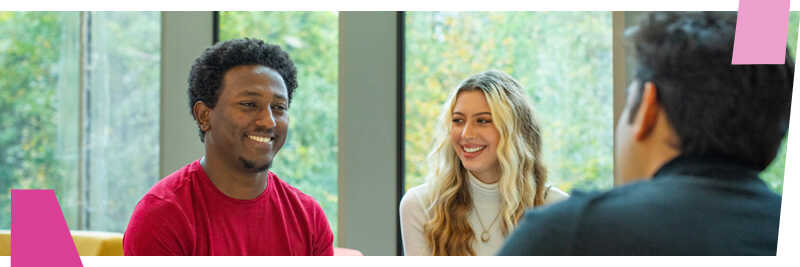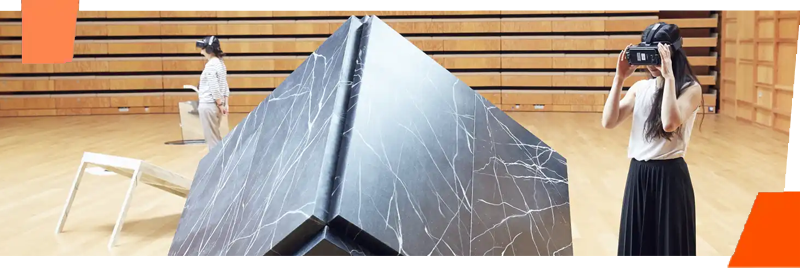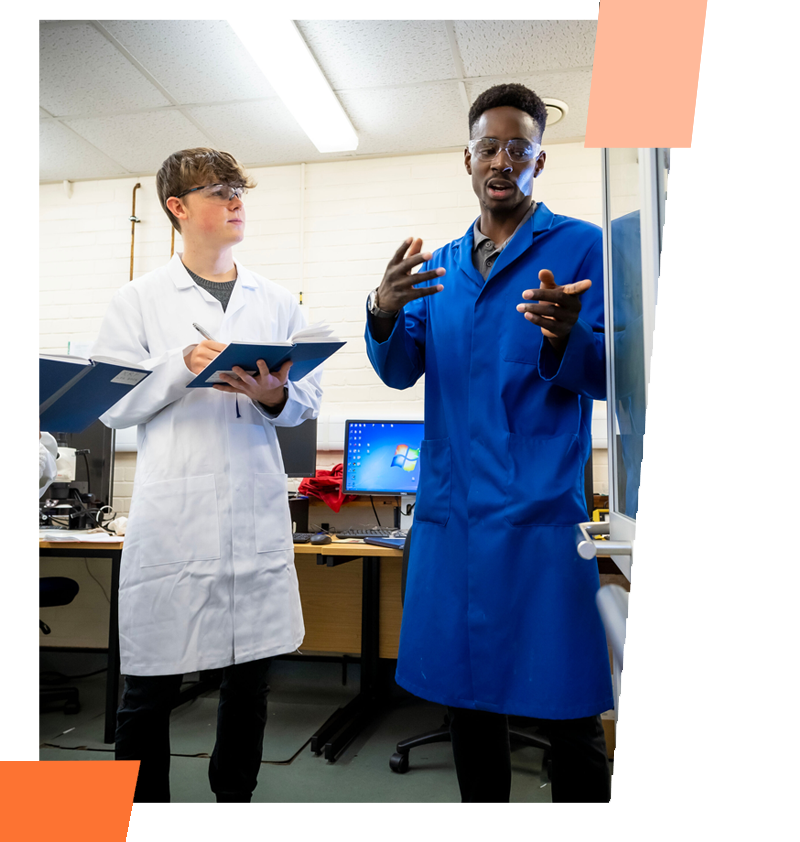Group tasks
The group exercise tests your ability to work in a team, looking at how you support a group. Along with team work, the tasks typically assess skills including: problem solving, analytical, creativity, decision making, and planning.
Ice-Breaker
Ice-breakers are a common exercise used at the beginning of an assessment centre. Although these are not necessarily an assessed exercise, they are a great way to help candidates relax and get to know each other. This can be through a range of activities, such as:
- Pairing up with another candidate, and finding out about them, their aspirations, hobbies and then introducing your partner to the rest of the group.
- Speed networking, where you have to introduce yourself to a certain number of people within a time limit.
- Introducing yourself to the group: name, degree subject, career aspiration and an interesting fact about yourself.
Practical task
These tasks are not necessarily related to the role, but can test practical problem solving capabilities. You may be asked to create a structure using certain items, such as making a building out of straws or moving an object in a creative way.
Discussion
You may be presented with a problem, scenario or topic that you need to discuss within a group. This could be related to the industry you are applying to, for example, a tech company may ask you to discuss advancements in technology, so having good commercial awareness is key!
“Are speed cameras effective?” or “Do plastic bag bans work?”
Leaderless and Leadership tasks
In a leaderless task, you could be given a discussion topic, and asked to make a group recommendation.
Candidates may be assigned individual briefing documents, with different information to each other, or you are designated specific roles. In this scenario you must collectively make a decision, whilst being set personal objectives that will partly conflict with the rest of the group. Your task will be to make a group decision, whilst using negotiation and compromising skills to find the best solution for everyone. Remember, it’s not about winning or losing but communicating effectively in a group to achieve your goal.
If the organisation is looking to test leadership qualities in their candidates, they may ask you to chair a meeting or lead a group.
What are they looking for in leadership tasks?
- Delegate. The task cannot be done by you alone, you must divide up the work between the others
- Use the strengths of others. Whether its presenting or analysing data – use individuals strengths appropriately
- Monitor the progress of the group, and make changes if things aren’t working
- Keep the group focused on the task at hand
- Ensure the group come to a decision!
Dealing with dominant team members
It is likely that you will come across a dominant team member at some point during an assessment centre. If this happens, it can become difficult for others to assert their opinions and potentially it can break down the group.
In this situation, don't be afraid to challenge them – be calm, diplomatic and logical, picking up on their points and asking them why they feel that way, whilst also inviting other group members to comment. This should encourage other members to put forward opinions.
Role play exercises
Role play exercises are interactive scenarios, which focus on how likely you are to perform in day-to-day tasks involved in your job.
In these exercises, candidates are usually given a brief, which outlines the situation, as well as being assigned a role. They’ll then have a limited amount of time to prepare for the meeting with the role-player.
Candidates will then enter a room, where an actor is playing a character. The role-player may act as a customer or colleague, for instance, and you could be an adviser or manager, responding to a specific situation. For instance, in a sales role, you could be asked to persuade the next customer that walks in that they should buy your product. The assessor would play the role of the customer, and it is your task to actively sell. You will also have to come up with realistic solutions to overcome any objections.
An assessor will be present in the room during the role-play to observe and make notes.
What do role plays assess?
Often used to assess your communication and negotiation skills, particularly if the job role requires a high degree of interpersonal interaction. Professions such as Customer Service Advisers, Consultants, Police and Prison Officers are given this type of assessment.
Useful links
https://www.graduatesfirst.com/assessment-day/role-play-exercises/
https://www.assessmentday.co.uk/assessmentcentre/role-play-exercise.html
https://www.jobtestprep.co.uk/role-play-exercises
Written exercises and case studies
Case studies can be individual or group exercises, where you need to respond to a case study brief. This is usually based on a real life problem, related to the industry you are applying to, such as choosing a project to invest in, or providing a solution to a problem for a client’s business.
You may be given a large set of documents to analyse, which could be a mixture of qualitative and quantitative data. You will be given a set amount of time to analyse the information, before making your decision, and using the information to construct your argument.
The case study allows the assessor to see how you would react to challenges faced within the job. If in a team setting, each candidate could be given a different briefing document and the group has to reach a conclusion despite having conflicting views. This type of scenario relies on the group being able to compromise to come to a decision. Once you have come to your conclusion, you may be asked to present your solution or produce a written recommendation.
What is being assessed?
This exercise can assess a range of skills, including: analysis, problem solving, communication, commercial awareness, working under pressure, numerical and decision making.
How to prepare for a case study?
Sometimes you may need to only rely on the information provided within the case study. Alternatively, the exercise may want you to use your own knowledge and understanding. Keeping up-to-date with relevant news stories and industry developments will be beneficial, for example reading business and finance newspapers e.g. the Financial Times.
Useful links
https://www.assessmentday.co.uk/assessmentcentre/case-study-exercise.html
https://targetjobs.co.uk/careers-advice/assessment-centres/275411-coping-with-case-studies-for-graduate-jobs
https://www.preplounge.com/en/bootcamp.php/interview-first-aid/crack-the-case-interview/case-studies
In-tray (e-tray) exercises
In-tray exercises can be a paper based (in-tray) or computer based (e-tray) and is likely to be a situation which simulates a task which may be based on the role you are applying for. They focus on a candidate’s ability to prioritise administrative tasks within a time limit.
At the beginning, you are usually provided with background information about the scenario i.e. your role, an organisational chart and the key objectives. The scenario could be that you are returning from a holiday to a full in-tray, for example.
You are then faced with multiple requests/actions, and your task will be to prioritise the items in order (e.g. analysing a report, drafting replies, delegating tasks, answering phone messages).
What is being assessed?
This type of exercise measures multiple competencies including prioritisation, analysis, working under pressure, problem solving, adaptability, organising, decision making and communication.
Assessors will be looking at your ability to absorb lots of information within a timeframe, and how you prioritise your workload to make decisions.
Top tips for this exercise
Research the company – it is important that you have a good understanding about what the organisation is looking for and the competencies being assessed. This will help to direct your answers.
Read the instructions carefully – take note of the instructions and read any supporting information. Try not to rush this, otherwise you may miss something important!
Prioritise – you will be given a number of tasks to deal with, so it is important to assess which of those should take precedence. Consider what the key factors are and be aware of any imminent deadlines or clashes. Try to delegate tasks which can be assigned elsewhere and consider if a task needs to be actioned immediately, or even at all.
When deciding the importance of a task, think about:
Who it is from
When it was produced
Does it have a deadline?
What steps need to be taken to action this?
Will it impact positively / negatively upon the company? e.g. a complaint
Can the task be referred on?
Manage your time – be mindful of the time limit, make sure that you work quickly, but keep focussed on the task and don’t panic
Be ready to give your reasons for your decisions!
Useful links
https://targetjobs.co.uk/careers-advice/assessment-centres/275463-what-are-in-tray-exercises
https://www.prospects.ac.uk/careers-advice/interview-tips/interview-tests-and-exercises
https://www.assessmentday.co.uk/in-tray-exercise.htm
Presentations
Presentations are a good way for employers to assess your verbal communication skills; enabling the assessor to see if you can present a well-structured and coherent argument, in a given time frame.
Planned presentations allow for some preparation time, prior to the assessment centre day. In this scenario, you may be given instructions in advance, giving you time to research and prepare your presentation. Usually presentations last for 5 – 10 minutes, and they could be on a topic related to the industry e.g. the impact of technology. Or you could be given a selection of topics to choose from.
On the spot presentations take away the extended preparation time, where you are given a topic to present on at the assessment centre. In this scenario, it is looking at your ability to work under pressure, as well as your verbal communication skills.
Useful links to help you prepare for your presentation:
Learn presentation skills by watching TED Talks: https://www.ted.com/playlists/226/before_public_speaking
https://targetjobs.co.uk/careers-advice/assessment-centres/275423-deliver-a-presentation-thats-worthy-of-a-graduate-job
Interviews
Use our interviews guide to find out about the different types of interview and common questions you may face.
You can also book a practice interview with our Careers and Employability team.
Psychometric tests
We have a range of free practice tests available to Kent Students. You can register here to take the tests, including logical, numerical and verbal reasoning tests.





